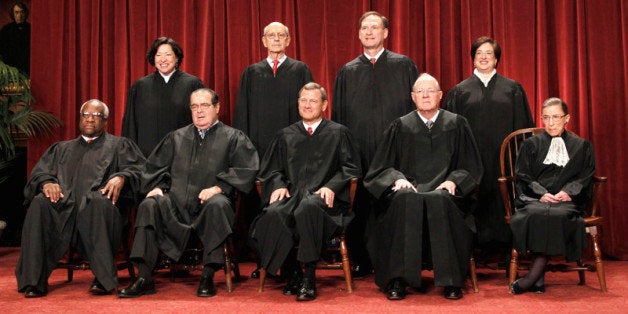
The news was a surprise. The longest-serving justice on today's Supreme Court had died in his sleep.
For the political class, shock and sorrow was quickly replaced with schemes and ploys. President Obama is desperate to appoint his replacement. Republicans, especially the six men left standing in the GOP primary process, are just as desperate to keep that from happening. We can hear the knives being sharpened for battle, but history is on the side of the president.
In his final full year in office, 1796, President Washington appointed a Chief Justice, Oliver Ellsworth, and an Associate Justice, Samuel Chase. Both were confirmed by the Senate.
The second president, John Adams, appointed John Marshall to the seat of Chief Justice after Adams failed to win re-election in November 1800. Marshall went on to serve the Court until 1835 and stands today as one of the great Chief Justices in the Court's history.
Andrew Jackson appointed John Catron to the court on March 3, 1837, Jackson's final full day in office. The Senate confirmed the appointment five days later, after Jackson had been replaced by Martin Van Burn.
After losing re-election in 1840 and one week before his term ended in 1841, President Van Buren appointed Peter Daniel to the Court. He was confirmed within the week.
Four years later, during his final months in office, President John Tyler in 1845 appointed Samuel Nelson to the court.
In 1880, his last full year in office, Rutherford B. Hayes appointed William Woods as Associate Justice.
President Grover Cleveland appointed Melville W. Fuller as Chief Justice in July 1888, four months before Cleveland lost re-election to Benjamin Harrison.
In February 1893, after losing re-election in 1892 and one month before his presidency ended, Benjamin Harrison appointed Howell Jackson to the Court.
Justice Mahlon Pitney was appointed an Associate Justice 1912 -- an election year that saw incumbent William Howard Taft defeated and replaced by Woodrow Wilson.
In March 1932, another presidential election year, this one in the depths of the Great Depression, Herbert Hoover appointed Benjamin Cardozo to the Court.
And in November 1987, with just fourteen months left in his presidency, Ronald Reagan appointed Anthony Kennedy as an Associate Justice on the Court. Kennedy was unanimously confirmed in February 1988.
The Constitution (Article II, Section 2) confers on the president the right to appoint Supreme Court justices. It also confers on the U.S. Senate the right to give "advice and consent" regarding those appointments. It does not forbid appointments in the final year, or even in the final months, of a presidency -- not even during an election year. We fight wars and depressions and terrorists during election years -- and we appoint men and women to the federal bench.
If the Republican-dominated Senate, therefore, wishes to vote down one Obama appointment after another throughout all of 2016, it may do so. It may not, however, constitutionally, deny a vote to the man or woman appointed by President Obama to replace the late Justice Scalia.
Rodney Wilson teaches American political systems at a community college in Missouri.
